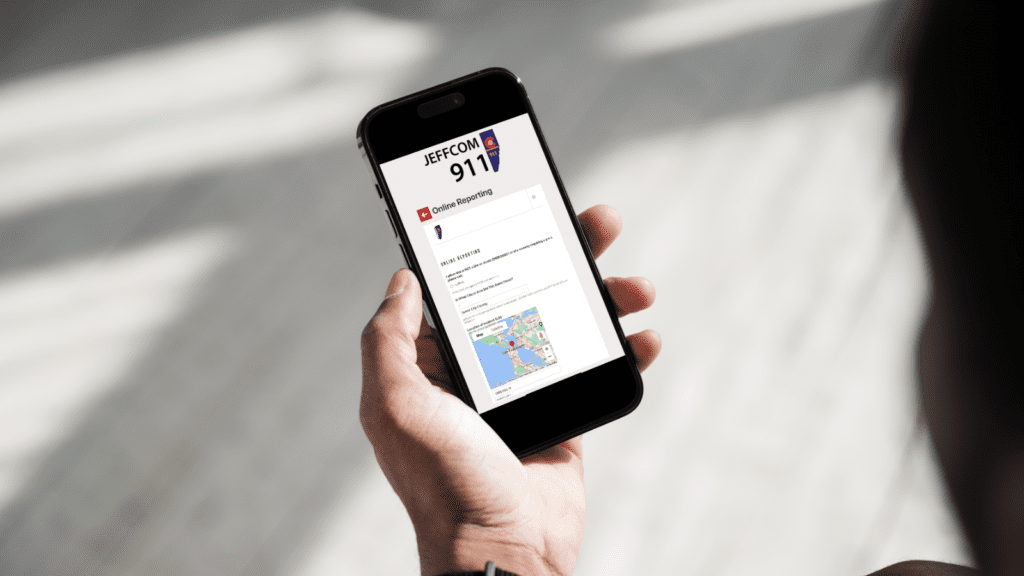Next Gen 9-1-1 Tech Transforms State And Local Emergency Response
For decades, the National Emergency Number Association (NENA) has championed safety technology advancements and access to the right response tools, while advocating for the implementation of a universal emergency telephone number system in the U.S. that works across communication devices.
This year’s conference, there was a palpable sense of urgency to usher in Next Generation 9-1-1 (NG9-1-1) improvements and to take advantage of the powerful capabilities and flexibility that cloud enabled services offer – and that is fantastic news for the nation’s overburdened emergency call takers, dispatchers, first responders and the public.
The annual gathering held in June felt particularly noteworthy. I headed home from Grapevine, TX, invigorated by the transformation taking place throughout the 9-1-1 community. Conference attendees were eager to learn about and adopt new technologies that improve response, increase resiliency, and reduce telecommunicator workload.
Conversations centered around the $15 billion Next Generation 9-1-1 Act of 2023 bill introduced in the U.S. House of Representatives put and unanimously advanced by committee members. If that legislation passes and funding is secured, it will allow local 9-1-1 call centers to upgrade the resiliency of their networks, implement new emergency call technologies to handle texts, photos and videos from those requiring assistance or to forward calls to other agencies. Many public safety answering points are forging ahead with NG9-1-1 enhancements despite the uncertainty of federal funding.
Streamlined Communication with Text Messaging and Apps
Improving resident engagement is top of mind for many 9-1-1 leaders. For years, Rave’s 911 Suite has allowed 9-1-1 dispatchers to text a caller if a call was dropped, the caller was non-verbal, if the person needed to remain silent for safety reasons or even to deflect non-emergency requests to online self-service tools.
As the industry continues to grapple with staffing shortages, public safety professionals are increasing their adoption and innovative uses of text-from-911 to improve workflows. Now, 9-1-1 call takers for police, fire, and emergency medical agencies are sending texts when calls are disconnected and sharing links when multiple calls are received for significant emergencies such as active shooter incidents, multi-alarm fires or motor vehicle crashes. By consolidating and coordinating similar calls and directing non-emergency requests to more appropriate channels, 9-1-1 lines can remain open for other emergencies.

Jefferson County, Colorado’s Jeffcom911 took community engagement to another level. The agency launched a community branded app specifically to connect community members with 9-1-1 and to various online services available in the county. The app has shown promising results – notably in terms of self service and the diversion of non-emergency calls.
By leveraging a platform that is easy to maintain and allows for modifications by non-technical users, the County envisions continuing to grow the services available. For example, they can include disaster preparedness tools, by simply exposing existing services thru the app – all without the need for developers or a cumbersome app store approval processes.
Video and Visuals Are Key for Critical Communications
Not surprisingly, video has become king for critical communications centers. We’ve all heard that a picture is worth a thousand words, but when it comes to resolving emergency situations, the value of video is exponentially higher. There was genuine excitement when I spoke with dispatchers about live video feeds and real-time chats. Video might be from fixed cameras with powerful AI applications to highlight focus areas, body worn devices, mobile devices or even drones. Video not only reduces response time, increases officer safety, and improves situational awareness, it allows 9-1-1 personnel to shorten call closeout times, which is critical when you have limited resources.
While many originally thought of video from mobile phones as primarily for caller engagement, we have seen increasing use cases between responders and dispatch, or even emergency management agencies. School safety initiatives are often at the core of many projects to integrate video into the response process, and the technology to both aid in the response as well as newer technologies hold great promise for thwarting incidents before they occur.
Floor Plan Applications and Emergency Proximity Alerts
In the same way that video helps to tell the story, there is greater demand for better indoor caller location and geospatially-oriented floor plans.
When dispatchers and responders have access to digital renderings that identify stairwells, corridors, egress/ingress points, AEDs, utilities and more, response will be quicker and more informed. While some larger venues will be able to fund sophisticated 3-D mapping, most agencies are looking at cost effective methods for easily collecting and managing floor plans from facilities and then visualizing increasingly accurate caller location data directly on top of those images. Immediate access to site-specific visuals is just one of the reasons why Rave Panic Button has become a game-changer for schools and public safety personnel during emergencies.
Due to the need for enhanced K-12 school safety today, I had several conversations with PSAPs looking to invest in instant alerting technologies for school districts and, importantly, other soft targets within their region. The value of floor plans and other facility-specific information were part of those exchanges.
Emergency Mass Notification
Interestingly enough, the old has become new again. Emergency mass notification, a relatively mature technology, is helping agencies with staffing shortages to keep resident populations informed of key events and to defer calls that are repetitive in nature.
Simplifying mass communication processes to ensure that emergency notifications are sent to geo-bounded areas, delegated down to dispatchers and integrated into CAD interfaces, is one use case these days. Automating call outs based on incident types and dispositions is another.
Overall, effective communication about incidents and updates can help to defer time-consuming calls from the public and command staff looking for information, and ensure timely engagement of “external” support resources including school resource officers, transportation departments, departments of natural resources, etc.
Data Sharing and Interoperability Moves from Theory to Operation
And finally, while I may be biased given Rave Mobile Safety’s role as technology lead for the state of California’s data integration and interoperability project, there was genuine excitement when Budge Currier with California’s Office of Emergency Services (Cal OES) presented the NG9-1-1 changes afoot for the state’s 450 PSAPs.
As that effort approaches the one-year mark, there have been a lot of lessons learned that will serve the wider public safety industry. For example, early on, Cal OES recognized the importance of having a cloud hub and spoke system for their safety efforts – and not purely for the cybersecurity reasons that prompt most PSAPs to explore cloud-based 9-1-1 call handling solutions. California officials recognized an opportunity to enhance public response by bridging disparate CAD systems through a cloud and standards-based solution.
The integrated suite of technologies that Cal OES is building with Rave and others will also fulfill the state’s public safety communication needs and provide awareness, sharing and automated messaging to adjacent state agencies (Transportation, Emergency Management, Fish & Game). This unprecedented level of interoperability will help with cross-jurisdictional response, mutual aid resourcing and 988 suicide hotline data transfers.
The Path Ahead
Other state and county agencies around the country are also looking to the Cal OES-Rave Mobile Safety model to leverage data sharing capabilities that allow seamless backup and overflow processes.
NG9-1-1 i3 networks allow calls to be re-routed, and with incident and AVL sharing as well as increasingly sophisticated capabilities to remotely access radio networks, the entire call handling and dispatch process can move across the country when outages occur or major incidents require a surge in capacity.





